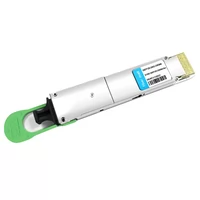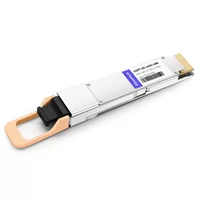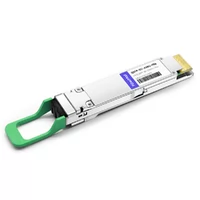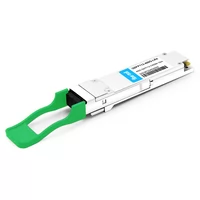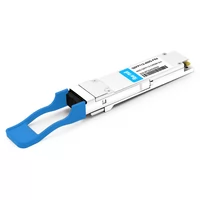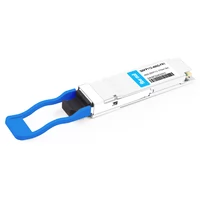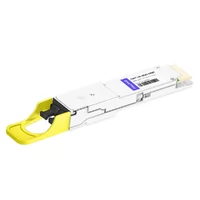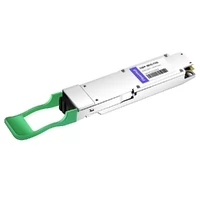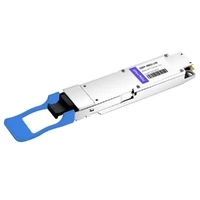Table of Contents
ToggleIntroduction to Fiber Optic Transceivers
Fiber optic transceiver, also called optical module, is used to realize the conversion between electrical and optical signals. It is the core device for connecting communication equipment with optical fibers. The optical module is usually composed of Transmitter Optical Subassembly (TOSA, containing a laser LD Chip), Receiver Optical Subassembly (ROSA, containing a photodetector PD Chip), a driving circuit, and an optical and electrical interface. Its schematic is shown in Figure 1.
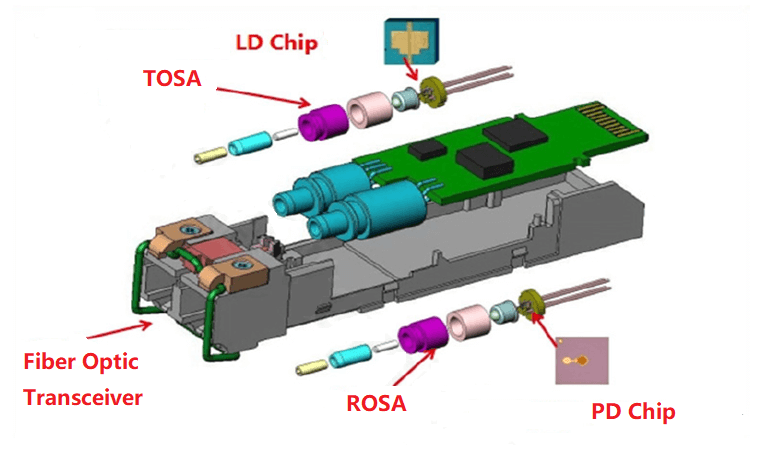
Figure 1 Internal structure diagram of optical module
The lasers inside the optical module can be divided into vertical cavity surface emitting lasers (VCSEL), Fabry-Perot lasers (FP), distributed feedback lasers (DFB), electro-absorption modulated lasers (EML) and narrowband tunable lasers, etc.; Photodetectors can be classified into PIN junction diodes (PIN) and avalanche photodiodes (APD). Different types of lasers and photodetectors have differences in performance and cost, so we can choose different chip solutions according to their specific specifications.
Let’s take the 25G gray optical module as an example to introduce the basic functional block diagram of the optical module.

Figure 2 Basic functional block diagram of the optical module
At the sending end, the electrical signal at a certain rate is processed by the driver chip to drive the laser (LD) to emit a modulated optical signal at a corresponding rate, and the optical signal with stable power is output through the optical power automatic control circuit. At the receiving end, after entering the module, the optical signal at a certain rate is converted into an electrical signal by a photodetector (PD), and then output an electrical signal of a corresponding rate after passing through a preamplifier.
In addition to lasers and detectors, the optical module also contains some electrical chips, the specific functions can be seen in the figure below.

Figure 3 Introduction to the functions of the internal components of the optical module
Classification of optical modules
Optical modules can be classified in many ways, such as according to packaging method, rate, transmission distance, modulation format, whether to support wavelength division multiplexing (WDM) applications, optical interface working mode, working temperature range, etc. The specific classification is shown in the following table.
Table 1 Classification of optical modules
| Classification of Optical Modules | |
|---|---|
| By form factor | SFP,SFP+,SFP28,QSFP28,CFP2,QSFP-DD,OSFP,etc. |
| By transmission distance | 2.5Gb/s,10Gb/s,25Gb/s,40Gb/s,50Gb/s,100Gb/s,200Gb/s,400Gb/s,800Gb/s,etc. |
| By Modulation mode | NRZ,PAM4,DP-QPSK/n-QAM,etc. |
| Whether wavelength division multiplexing(WDM) is supported | gray light module(WDM not supported),color optical module (WDM supported) |
| By working module of ptical interface | Duplex,BiDi |
| By operating temperature range | Commercial grade (0~70℃), industrial grade (-40~85℃), etc |
The evolution of the packaging method can most intuitively reflect the evolution trend of high speed and miniaturization of optical modules. From SFP packaging to QSFP, QSFP-DD packaging, the rate of optical modules has increased from 1Gbps to 800Gbps, and the improvement of packaging technology has enabled optical modules to adapt to higher rate requirements with little change in volume.
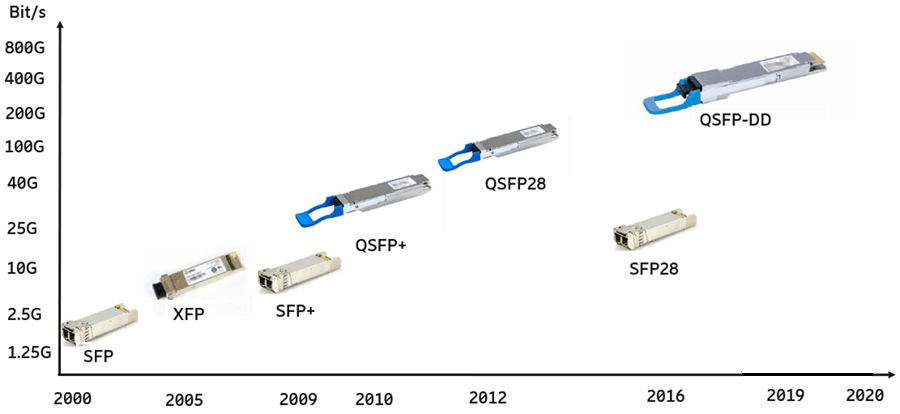
Figure 4 Evolution of optical module packaging
With the advent of 5G, optical module manufacturers have launched colored optical modules to support higher bandwidth requirements. The colored optical module adopts WDM technology, which combines optical signals of different wavelengths on one optical fiber for transmission, which greatly improves the signal transmission bandwidth of the link. At present, the colored module is mainly divided into CWDM, LWDM, MWDM, and DWDM.
Table 2 Comparison of colored optical modules
| Main types of color optical modules | Channel interval | Scheme | Cost | Major commercial area |
|---|---|---|---|---|
| CWDM | 20nm | uncooled DML+PIN | low | China |
| LWDM | 800GHz | cooled DML+PIN | medium | Japan and South Korea |
| DWDM | 100GHz | cooled EML+APD | high | North America, Japan, and South Korea |
| MWDM | CWDM wavelength+-3.5nm | cooled DML+PIN | medium | China |
Its wavelength distribution is as follows:

Figure 5: wavelength distribution of colored optical module
Main application fields of optical modules
Optical modules are mainly used in the field of telecommunications and data centers. In the field of telecommunications, it is mainly used in wireless fronthaul, middle and backhaul, backbone transmission, FTTX, etc.; In the field of data centers, it is often used in the internal data transmission of the main data centers and the interconnection among data centers.
Application of Fiber Optic Transceivers in the Telecom Field
Taking the 5G bearer network as an example, it is generally divided into the metro access layer, the metro aggregation layer, the metro core layer/provincial trunk line to realize the front-haul and mid-haul functions of 5G services. The devices at each layer are interconnected mainly through optical modules, and their typical application scenarios and requirements analysis are shown in Table 3.
Table 3: Analysis of 5G bearer optical module application scenarios and demand
| Network layering | Metro access layer | Metro convergence layer | Metro core layer/trunk line | |
|---|---|---|---|---|
| 5G front-haul | 5G mid-and-back-haul | 5G mid-and-back-haul+DCI | 5G mid-and-back-haul+DCI | |
| Transmission distance | <10/20km | <40km | <40km-80km | <40km-80km/hundreds km |
| Networking topology | Star type is dominant, with ring network auxiliary | Ring network dominates, with a small number of chain or star links | Ring network or dual uplink link | Ring network or dual uplink link |
| Customer interface rate | eCPRI:25Gb/s, CPRI:N*10/25Gb/s | Early 5G:10/25Gb/s Scale business:N*25/50Gb/s | Early 5G:10/25Gb/s Scale business:N*25/50/100Gb/s | Early 5G: 25/50/100Gb/s Scale business:N*100/400Gb/s |
| Line interface rate | 10/25/100Gb/s gray light or N*25/50Gb/s WDM color light | 25/50/100Gb/s gray light or N*25/50Gb/s WDM color light | 100/200Gb/s gray light or N*100Gb/s WDM color light | 200/400Gb/s gray light or N*100/200/400Gb/s WDM color light |
Typical requirements for optical modules in 5G front-haul application scenarios are as follows:
(1) Within the industrial temperature range and satisfying high reliability requirements: Considering the AAU full outdoor application environment, the fronthaul optical module needs to be within the industrial temperature range of -40°C~+85°C and meet the dustproof requirements.
(2) Low cost: The total demand for 5G optical modules is expected to exceed that of 4G, especially the demand for front-haul optical modules may be in the order of tens of millions. Low cost is one of the main demands of the industry for optical modules.
Table 4 Current situation of 5G fronthaul optical modules
| Rate | Form factor | Transmission distance | Operating wavelength | Modulation format | Optical chip |
|---|---|---|---|---|---|
| 25Gb/s (eCPRI/CPRI) | SFP28 | 70-100m | 850nm | NRZ | VCSEL+PIN |
| SFP28 | 300m | 1310nm | NRZ | FP/DFB+PIN | |
| SFP28 | 10km | 1310nm | NRZ | DFB+PIN | |
| SFP28 BIDI | 10km/15km/20km | 1270/1330nm | NRZ/PAM4 | DFB+PIN(or APD) | |
| SFP28 | 10km | CWDM | NRZ | uncooled DFB+PIN | |
| SFP28 | 15km | LWDM | NRZ | cooled DFB+PIN | |
| SFP28 | 10km | MWDM | NRZ | cooled DFB+PIN | |
| SFP28 | 10km | DWDM | NRZ | cooled EML+APD | |
| SFP28 Tunable | 10km/15km | DWDM | NRZ | cooled EML+APD |
5G medium and backhaul covers the access layer, aggregation layer and core layer of the metropolitan area. The required optical module technology is not much different from that used in the existing transmission network and data centers. The access layer will mainly use 25Gb/s, 50Gb/ s, 100Gb/s and other gray light or colored light modules, the convergence layer and above will mostly use 100Gb/s, 200Gb/s, 400Gb/s and other DWDM colored light modules.
Application of optical modules in data centers
A data center is a huge data center group composed of multiple computer rooms. For the normal use of Internet services, it is necessary to coordinatate operation of data centers. A large amount of information between data centers converges at the same time, which creates the demand for data center interconnection network, and optical fiber communication is a necessary solution to realize network interconnection; Different from traditional telecom access network transmission equipment, data center interconnection needs to achieve larger and more intensive transmission of information, which requires switching equipment to have higher speed, lower power consumption, and more miniaturized performance. Fiber optic transceiver is a core factor that determines whether these performances can be realized.
The connection types of optical modules in data center can be divided into three types: internal information transmission in data centers, interconnection among data centers, and information transmission from data centers to users. At present, the internal communication of data centers accounts for the vast majority of data center communications. The great development of data center construction has promoted the development of high-speed optical modules, and the application prospects of high-speed optical modules are getting better and better.
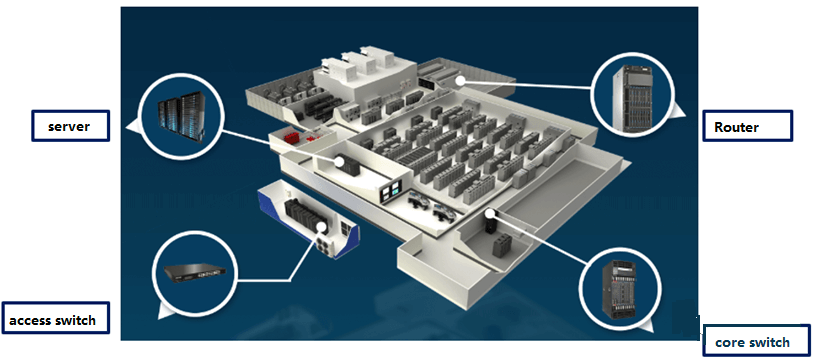
Figure 6 Diagram inside the data center
Optical module industry chain
The optical module industry chain consists of upstream optoelectronic chip suppliers, midstream optical module suppliers, and downstream telecommunications, network equipment vendors, internet service providers and Internet manufacturers.
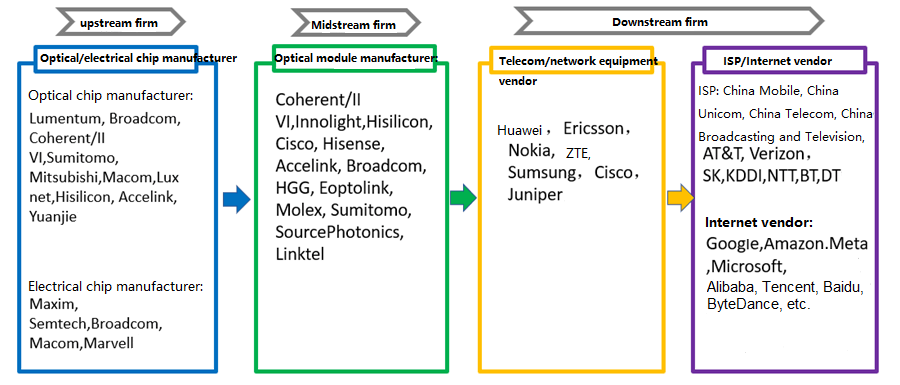
Figure 7 Industry chain of optical modules
There are many suppliers of upstream optoelectronic chips, but high-end optical chips and electrical chips have high technical barriers and high R&D costs. The optical module industry is located in the middle of the industry chain, which belongs to the packaging link with relatively low technical barriers. It is under the pressure of the top and bottom of the chain, with relatively weak bargaining power and fierce competition within the industry. After years of development, Chinese companies have occupied half of the global optical module market by virtue of their advantages in labor costs, market size, and support from equipment manufacturers and operators.
Development trend of Fiber Optic Transceivers
High speed is the inevitable trend of optical modules. With the evolution of optical modules to high speeds such as 400G, 800G and even 1.6T, the market has increasingly high requirements for low power consumption, miniaturization, and low cost. There will be a technical bottleneck for traditional optical module technology. Due to its high integration and low power consumption, silicon photonics integration technology will break through this bottleneck and usher in a technological breakthrough. At present, more and more manufacturers from home and abroad are investing in the research and development of silicon photonics integrated modules. Some high-speed optical modules using silicon photonics integration technology have been mass-produced and put into use in data centers.
Related Products:
-
 QSFP-DD-200G-CWDM4 2X100G QSFP-DD CWDM4 2km CS SMF Optical Transceiver Module
$1100.00
QSFP-DD-200G-CWDM4 2X100G QSFP-DD CWDM4 2km CS SMF Optical Transceiver Module
$1100.00
-
 QSFP-DD-400G-SR8 400G QSFP-DD SR8 PAM4 850nm 100m MTP/MPO OM3 FEC Optical Transceiver Module
$149.00
QSFP-DD-400G-SR8 400G QSFP-DD SR8 PAM4 850nm 100m MTP/MPO OM3 FEC Optical Transceiver Module
$149.00
-
 QSFP-DD-400G-DR4 400G QSFP-DD DR4 PAM4 1310nm 500m MTP/MPO SMF FEC Optical Transceiver Module
$400.00
QSFP-DD-400G-DR4 400G QSFP-DD DR4 PAM4 1310nm 500m MTP/MPO SMF FEC Optical Transceiver Module
$400.00
-
 QSFP-DD-400G-FR4 400G QSFP-DD FR4 PAM4 CWDM4 2km LC SMF FEC Optical Transceiver Module
$500.00
QSFP-DD-400G-FR4 400G QSFP-DD FR4 PAM4 CWDM4 2km LC SMF FEC Optical Transceiver Module
$500.00
-
 QSFP112-400G-LR4 400G QSFP112 LR4 PAM4 CWDM 10km Duplex LC SMF FEC Optical Transceiver Module
$1500.00
QSFP112-400G-LR4 400G QSFP112 LR4 PAM4 CWDM 10km Duplex LC SMF FEC Optical Transceiver Module
$1500.00
-
 QSFP112-400G-FR4 400G QSFP112 FR4 PAM4 CWDM 2km Duplex LC SMF FEC Optical Transceiver Module
$750.00
QSFP112-400G-FR4 400G QSFP112 FR4 PAM4 CWDM 2km Duplex LC SMF FEC Optical Transceiver Module
$750.00
-
 QSFP112-400G-FR1 4x100G QSFP112 FR1 PAM4 1310nm 2km MTP/MPO-12 SMF FEC Optical Transceiver Module
$1200.00
QSFP112-400G-FR1 4x100G QSFP112 FR1 PAM4 1310nm 2km MTP/MPO-12 SMF FEC Optical Transceiver Module
$1200.00
-
 QSFP-DD-800G-DR8D QSFP-DD 8x100G DR PAM4 1310nm 500m DOM Dual MPO-12 SMF Optical Transceiver Module
$1250.00
QSFP-DD-800G-DR8D QSFP-DD 8x100G DR PAM4 1310nm 500m DOM Dual MPO-12 SMF Optical Transceiver Module
$1250.00
-
 OSFP-800G-FR8L OSFP 800G FR8 PAM4 CWDM8 Duplex LC 2km SMF Optical Transceiver Module
$3000.00
OSFP-800G-FR8L OSFP 800G FR8 PAM4 CWDM8 Duplex LC 2km SMF Optical Transceiver Module
$3000.00
-
 OSFP-800G-LR8 OSFP 8x100G LR PAM4 1310nm MPO-16 10km SMF Optical Transceiver Module
$1800.00
OSFP-800G-LR8 OSFP 8x100G LR PAM4 1310nm MPO-16 10km SMF Optical Transceiver Module
$1800.00

